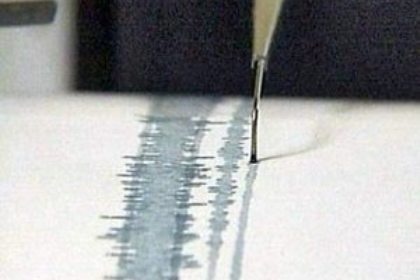Amazing facts about earthquakes
 Bashny.Net
Bashny.Net

Earthquake killed an average of 8,000 people a year and caused about 13 million deaths over the past four millennia.
In Japanese mythology earthquake causes a giant stingray named Namatius.
When an earthquake in the Indian Ocean in 2004 had released so much energy that it would be enough to provide full electricity demand in the US for three days.
On average, the earthquake lasted about a minute.
Aftershocks can happen and one year after the earthquake. Aftershocks happen because of the fact that the reset line and shifted the Earth's crust come to equilibrium after the main earthquake. After a major earthquake aftershocks may last for years.
Parkfield, a town in California called the "Capital of the earthquake." It is a bridge that connects the two tectonic plates.
Basically earthquakes happen because of geological problems, but sometimes they can be caused by landslides, explosions in mines, nuclear tests and volcanic activity.
In the northern hemisphere occurs more earthquakes than on the opposite side of the globe.
The biggest avalanche caused by the earthquake, went to Peru. The huge mass of a mixture of ice, mud and stones came down with a speed of 400 km per hour from Mount Huascaran and razing entire villages, destroyed more than 18 thousand local residents.
The largest landslide that killed more than 200,000 people, occurred in the Chinese province of Kansu in 1920.
The most powerful tsunami with a wave height of 85 meters devastated the Japanese island of Ishigaki in 1771.
Even the slightest movement of tectonic plates can cause large earthquakes.
Zhang Heng, a famous astronomer from China, invented the first detector earthquake nearly two millennia ago. This device was able to fix the earthquake, the epicenter of which was located at a distance of 600 kilometers.
About 80% of the largest terrestrial oscillations occur in the "Belt of Fire", which is in the form of a horseshoe stretches of the Pacific Ocean in the place of "meeting" many tectonic plates. The second most common area of the earthquake was in an area that covers Turkey, India and Pakistan.
Earthquakes can trigger volcanic eruptions, as happened with Mount St. Helens in 1980 and before the eruption of Mount Etna in the beginning of the third millennium (2002).
In the first year of the 13th century in the eastern Mediterranean was the worst thing in the history of the earthquake. It is estimated that it destroyed millions of lives.
Scientists believe that most animals can sense the slightest fluctuations in the earth before the earthquake, but some researchers disasters believe that it is rather the electrical signals coming from the rock mass to be shifted.
The ancient Greeks believed that the cause of earthquakes are hurricane-force winds that occur in caves inside the Earth.
The longest of the recorded earthquakes occurred in 2004 in the Pacific Ocean, and lasted for 10 minutes.
English scientist John Milne constructed the first seismograph in 1880. Charles Richter introduced a scale measuring the strength of earthquakes, named after him, in 1935.
The strongest earthquake in recent history occurred in 1960 in Chile. Giant ocean waves after this catastrophe spread over a distance of 6000 kilometers from the center of oscillation of the crust.
The limit of the measured seismic velocities of 360 kilometers per hour.
Before the earthquake of some reservoirs may come unusual odor, due to an increase in the intensity of the emission of gas from the earth's crust. Also, the temperature of parts of the crust may begin to rise.
Strong earthquake under the ocean floor caused tsunami waves that spread in all directions to a distance of 1,000 miles. When this wave reaches the shore, she suddenly grow up, can cause terrible destruction.
The Moon also occur oscillations of the earth's crust, they are much weaker than the earth tremors and called moonquakes.
Earthquake in Alaska, after which, in some places the ground sank almost 6 meters, has caused flooding in Hawaii that are in the 3 thousand 100 kilometers from the peninsula. Destructive vibrations lasted for 4 minutes, and their strength reached unimaginable 9, 1 point.
First described the earthquake dates back to 1831 BC. It happened at the site of modern Chinese province of Shandong.
When people talk about earthquakes often occur in the imagination of the Japanese islands. Indeed, in Japan, there are thousands of earthquakes per year, but fortunately, most of them are mild and harmless.
Date March 11 will never be forgotten by the Japanese. On this day in 2010 was the strongest earthquake in modern Japanese history. A powerful tsunami, rising to 10 meters, put out of action a large nuclear power plant built in Fukushima. This kind of accident does not pass in vain for the planet - after a powerful impetus earth's axis is deviated by a half dozen cm.
Tags
See also
Amazing facts about the unusual creatures of nature
The most amazing facts about eyes You didn't know
Amazing facts about a romantic date
25 amazing facts that you hardly heard about Switzerland. This country has with the surprises!
Amazing Facts
20 amazing facts
Interesting and amazing facts about the Jedi
ten "surprising" facts about Putin
Amazing facts about the Mariana Trench

















